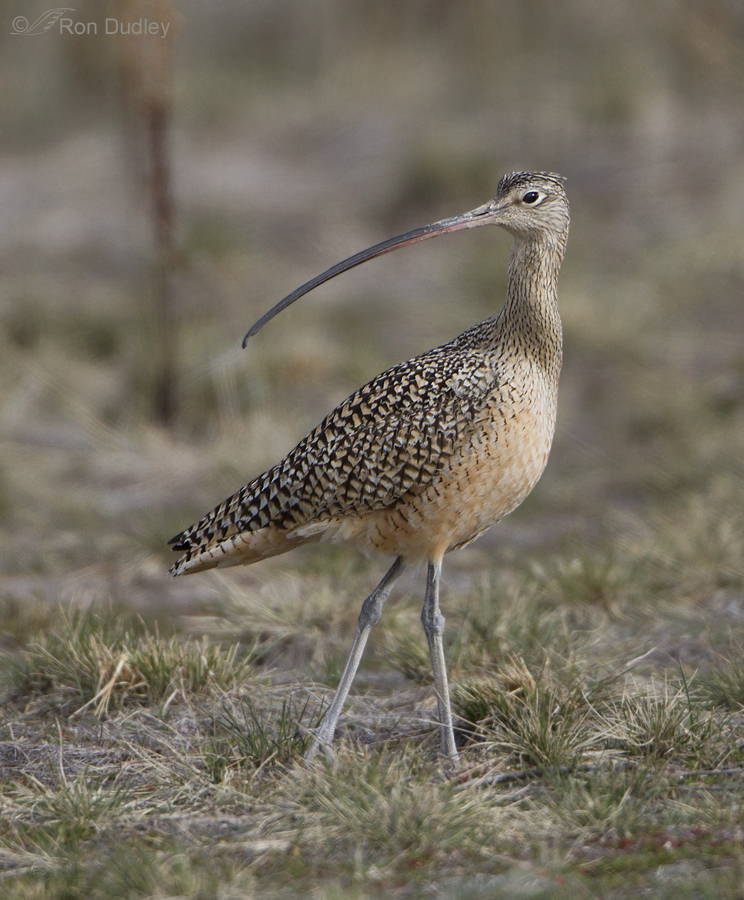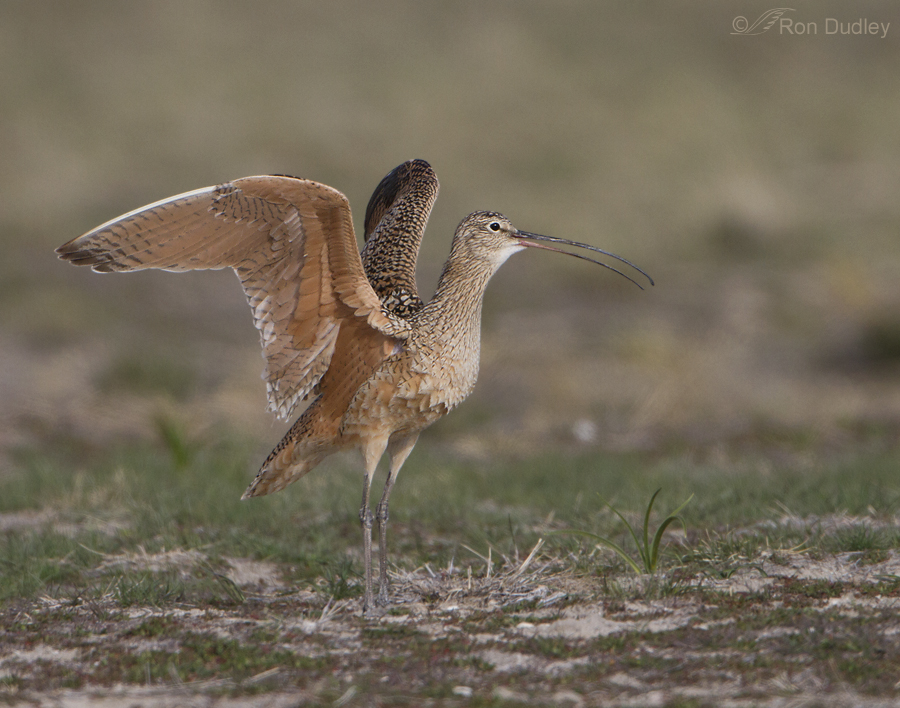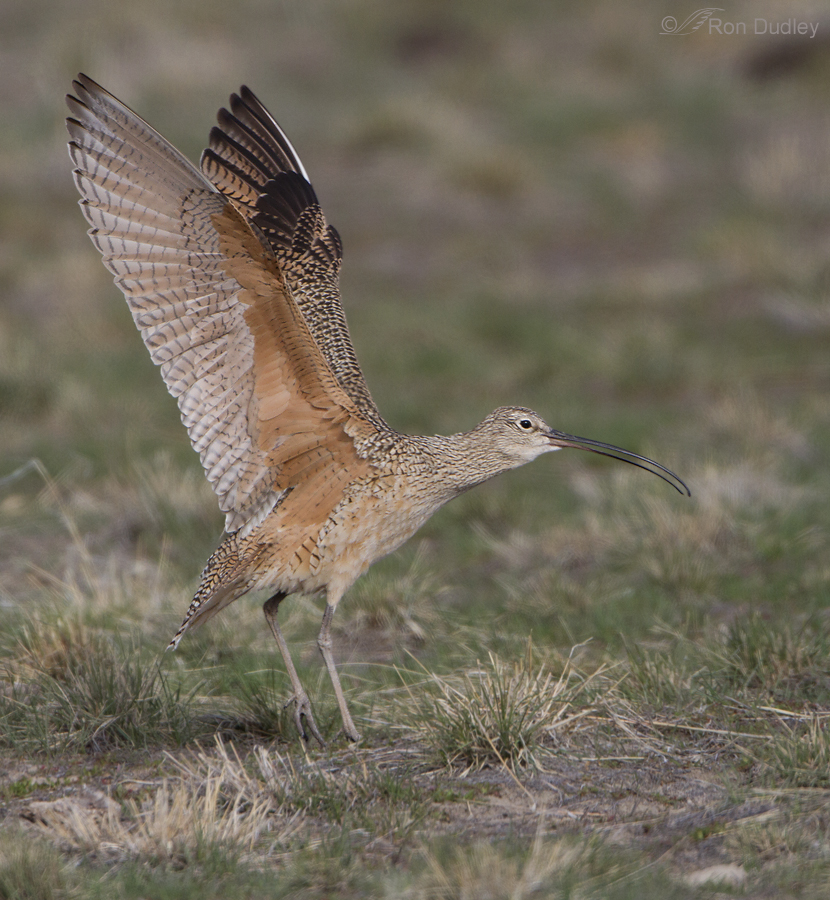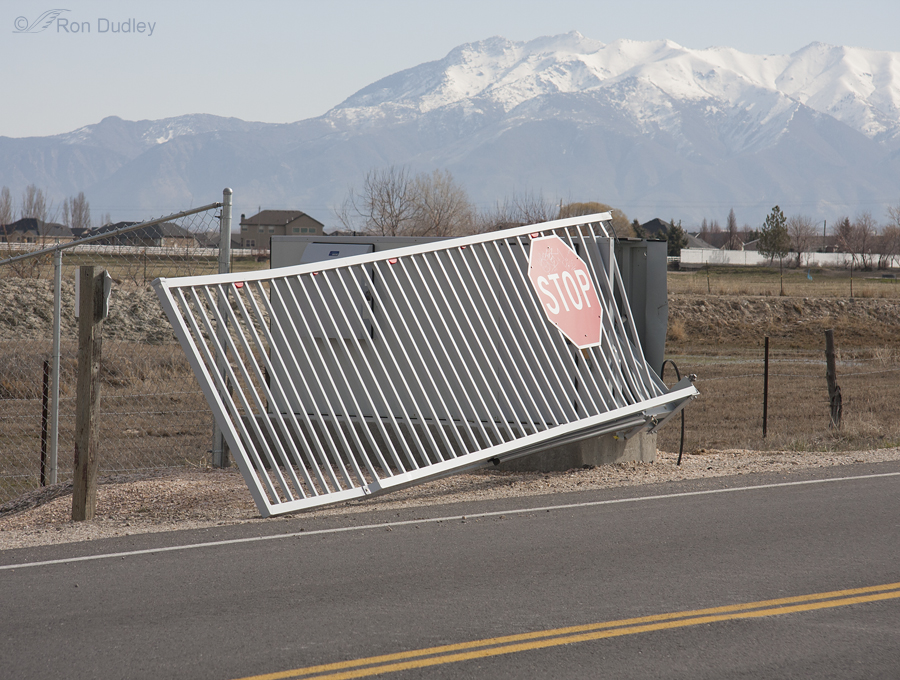One of my favorite birds on the island is the Long-billed Curlew. They’ve been gone for a long time now and I’ve missed them but they’re one of the earlier migrating birds to return and we spotted (and heard) our first one two days ago, though it was far off and we got no photographs. Right on time too, because the first one we saw last year was on March 19.
1/2000, f/6.3, ISO 640, 500 f/4, 1.4 tc, natural light
So when we visited the island yesterday morning both Mia and I were anxiously looking for curlews. And we found them in good numbers on the same strutting grounds they’ve preferred in the past. This is a female – they’re larger than the males and have longer bills.
1/2500, f/6.3, ISO 640, 500 f/4, 1.4 tc, natural light
Their calling is something we both love to hear. At times you can hear their calls reverberating all over the north end of the island as they call in flight and on the ground (link to their call here).
This is not a simple wing-stretch. It’s an aggressive behavior called “wing-raising” and it’s directed at other birds at close range. The behavior is used to maintain comfortable distances between individual curlews (yes, there were other curlews relatively close by).
These birds really come into their own when they show the colors under their wings.
1/2000, f/6.3, ISO 640, 500 f/4, 1.4 tc, natural light
Another wing-raising posture, this time with gusto.
These curlews will be displaying, strutting their stuff, performing aerial displays and selecting mates over the next few weeks, something I’ve looked forward to for many frigid months now.
Ron
PS – For those of you who visit the island occasionally, you’ll notice something different on your next trip as you approach the entrance station at the beginning of the causeway.
There’s an almost new electronic gate at the entrance that is closed to traffic during the night (folks leaving the island are allowed out via a sensor in the road).
Well, that gate is no more. Saturday night someone who apparently tried to get on the island after closing hours became angered by the gate and decided to bash it in, probably with their vehicle. The gate was destroyed and since it was uninsured and in these financially dire times for the state parks there are no funds for its replacement, at least for now there will be no gate.
Makes me wonder what other types of mischief this low-brow might have inflicted on the island if he/she had been able to get there. (Maybe they did, I don’t know for sure…)






I will certainly be looking for these amazing birds, and I hope the jerk who broke the gate gets his due. It is so sad that selfish, uncaring people like him get away with ruining things.
I’d love to see curlews in this setting. Actually, nowadays, I’d like to see them at all. Miss my Bay Area shorebirds. The gradations of color is amazing in these birds that appear, on the surface, to be just shades of brown. Oh, and, on the gate — low brow is the only accurate descriptor, methinks. Saw the tracks of low brow Refuge visitors yesterday, might have to blog about that in another post.
Beautiful! I saw my first Long-billed Curlew this winter and it was special! Thanks for the link to the call.
Glad you enjoyed the link to the call, Wally. I’ll try to provide them more often when they seem to add to the post.
Such a spectacular call. Thank you so much for adding the link for the calls – it has been helping me get a much better idea of the birds you are featuring. And as for this one? What a beak, what a bird!!! I can quite see why you and Mia look forward to seeing them each year.
We certainly do, Elephant’s Child. For us their arrival means that “early spring” has finally arrived. And besides, they’re just a lot of fun…
Talk about specialisation in nature; that beak wins the prize.
It certainly does, Maria. That bill is amazing. It’s an adaptation for probing deeply for earthworms and other burrow-dwelling prey like crabs and shrimp while it’s on its wintering grounds. While on their breeding grounds the rest of the year they get most of their food by simply pecking, which indicates they don’t need such a specialized bill during those times. That bill probably evolved specifically for feeding in their winter areas.
WOW, those are great shots Ron!!
I saw my life bird in Texas back in the 1970’s, BUT nothing like these shots.
Wonderful color, DOF and each one tells a story!!
Great bird. Thanks for sharing.
Thank you, Dick.